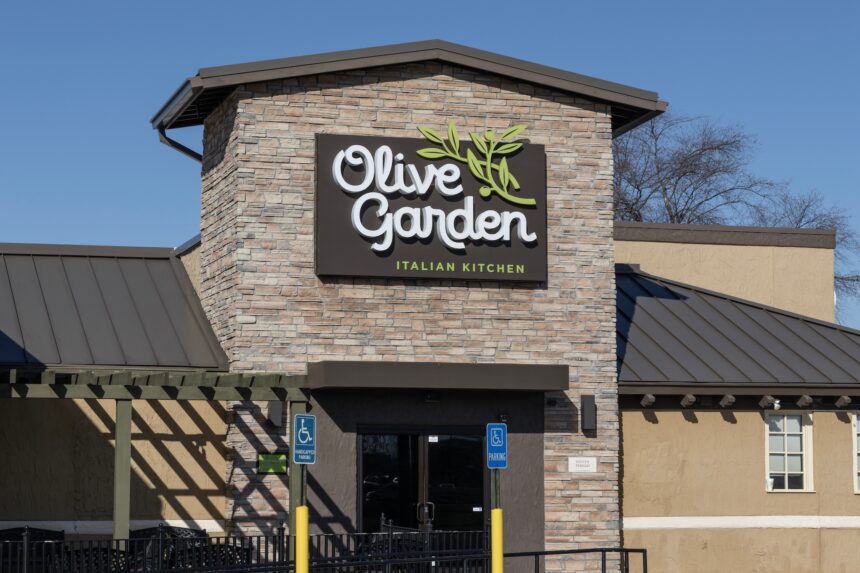Endless breadsticks and a side of corporate strategy—that’s what’s on the menu as Olive Garden prepares to expand across Canada following a major acquisition deal that could reshape the country’s casual dining landscape.
The beloved Italian-American chain, known for its unlimited breadstick baskets and family-style pasta bowls, appears poised for significant growth after parent company Darden Restaurants acquired Ruth’s Chris Steak House in a deal valued at approximately $715 million last year. This acquisition has strengthened Darden’s financial position and seemingly accelerated their Canadian expansion ambitions.
“We see meaningful opportunity to grow all of our brands in Canada,” said Ricardo Cardenas, Darden’s CEO, during a recent earnings call. While the company remained tight-lipped about specific location targets, industry analysts suggest major population centers outside the chain’s current footprint are prime candidates.
Olive Garden currently maintains just three Canadian outposts—two in Edmonton and one in Winnipeg—a surprisingly modest presence compared to its 900+ restaurants across the United States. This limited footprint has created something of a cult following, with Canadians often making special trips across the border specifically to visit Olive Garden locations.
The planned expansion marks a significant shift in strategy. Jessica Taylor, a retail analyst at Desjardins Securities, told me, “Canadian consumers have demonstrated remarkable brand loyalty to American casual dining chains, but these companies have historically underinvested in the Canadian market. Darden’s renewed focus here signals they’ve recognized this untapped potential.”
Market conditions appear favorable for expansion. According to Statistics Canada, food service sales reached $7.8 billion in January 2024, continuing a post-pandemic recovery trajectory. Meanwhile, commercial real estate vacancies in suburban shopping centers—prime territory for casual dining chains—remain elevated following pandemic-related closures, potentially creating advantageous leasing opportunities.
The timing also aligns with changing consumer preferences. “Post-pandemic, we’re seeing families place greater emphasis on dining experiences that offer perceived value and familiar comfort,” explained Vince Sgabellone, foodservice industry analyst at NDP Group Canada. “Olive Garden’s unlimited breadsticks model and family-style offerings fit perfectly within that sweet spot of affordable indulgence.”
For Canadian commercial property developers, Olive Garden’s expansion represents a potentially lucrative anchor tenant opportunity. These restaurants typically occupy 7,700-8,000 square foot spaces and generate substantial foot traffic that benefits neighboring businesses.
“Landing an Olive Garden can transform a commercial development’s prospects,” noted Tyler Freeman, a commercial real estate broker with Colliers International in Toronto. “They’re what we call a ‘traffic driver’—customers will travel significant distances specifically to visit them, and that creates spillover benefits for adjacent retailers.”
The expansion won’t come without challenges. Canada’s notoriously high commercial real estate costs in major urban centers could impact profitability, while labor shortages continue to plague the restaurant industry nationwide. According to Restaurants Canada, nearly 60% of food service operators report being understaffed.
Supply chain considerations will also factor into Olive Garden’s expansion equation. The company’s famous never-ending pasta promotion requires reliable, cost-effective ingredient sourcing—something that becomes more complex when operating in multiple Canadian provinces with varying distribution networks and seasonal availability.
Social media reaction to the potential expansion has been enthusiastic, with “Olive Garden Canada” trending periodically whenever rumors surface. TikTok users have created viral content documenting cross-border trips specifically to visit U.S. locations, highlighting the brand’s cultural cache among younger Canadian consumers.
This proposed expansion comes as several other American restaurant chains reconsider their Canadian strategies. Dave & Buster’s recently announced plans to double its Canadian locations over the next five years, while Popeyes Louisiana Kitchen continues an aggressive push into new markets across the country.
For Darden, the Canadian growth strategy represents a calculated risk. The company’s diverse portfolio—which includes The Capital Grille, LongHorn Steakhouse, and Cheddar’s Scratch Kitchen alongside Olive Garden and Ruth’s Chris—provides financial stability that supports international expansion. Their most recent quarterly results showed a 6.7% year-over-year sales increase across all brands, creating a strong foundation for growth initiatives.
Whether Canadians will soon enjoy unlimited breadsticks in Vancouver, Toronto, Montreal and beyond remains officially unconfirmed. However, industry insiders suggest announcements could come as early as this summer, with the first new locations potentially opening doors by late 2024 or early 2025.
In the meantime, devoted fans continue making their pilgrimages to the existing Edmonton and Winnipeg locations—or crossing the border for their breadstick fix—proving that sometimes, the most powerful marketing strategy is simply limited availability.
As one Edmonton restaurant manager told me, requesting anonymity as they aren’t authorized to speak publicly: “We get customers who drive three hours just to eat here. I’ve had people tell me they plan their entire road trips around stopping at our restaurant. That kind of loyalty is something most brands would kill for.”
It seems Darden has finally decided to bring the breadsticks to the people, rather than making Canadians chase them across provincial and international borders. For fans of unlimited pasta and breadsticks, that’s a development worth raising a glass of house wine to.






